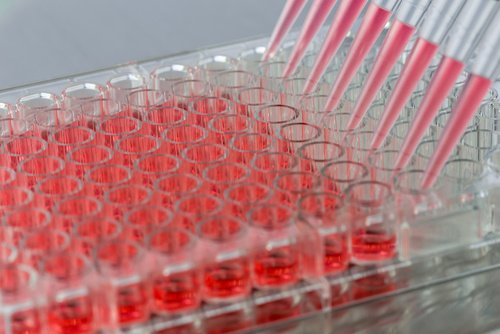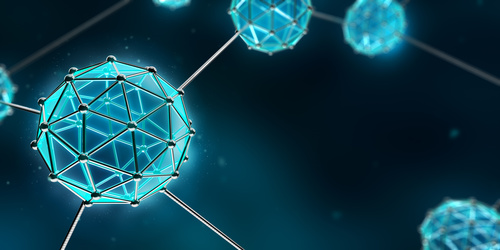Although nanotechnology is quite well known, its uptake in the food industry has been slow. The food grown or manufactured using nanotechnology has not gained as wide an acceptance as it was expected to. However, on the packaging side, the story is completely opposite. The nanotechnology based packaging materials are proving to be very successful. They are safe and have additional properties that are beneficial for packaging of food products. As the technology improves, the nano packaging is getting cheaper and its commercial use is expanding rapidly.
What is Nanotechnology
Nanotechnology is nothing but working with the material at the molecular level. This technique of manufacturing is used to create very thin layers (few molecules thick or just a few nanometers thick), of complex molecular structures that are not possible using conventional chemical processes. In its more advanced versions, this technology is also working in medicine and healthcare fields to create complex medicines. In the manufacturing industry, Nanotechnology is used to create thin coatings of active and passive materials to provide strong, flexible and inert layers to store volatile and highly reactive liquids and gases, or reacting with only specific substance while remaining inert to others. It is because of these properties, that nanotechnology is of great use in the packaging industry. It is now used in various kinds of packaging, especially in the food industry to extend the life of packaged food.
Nanotechnology in food packaging:
Traditionally the paper, metal (aluminum foils and tins) and plastic based polymer films of various grades are used for food packaging. However, each has its own disadvantages on various fronts, which nanotechnology overcomes. Some of the applications of nanotechnology in food packaging are listed below.
Barrier Packaging: Food material reacted negatively with Oxygen and becomes stale. The only viable solution is to remove all oxygen from the food environment (within the packaging) and prevent any infusion or leakage of oxygen into the packaging. Metal packaging such as tins are airtight, but are expensive and inflexible. Glass packaging is fragile and inflexible. The plastic polymer based packaging material is low in cost and flexible. However, it is slightly permeable to oxygen and other gases. Over time, the oxygen leaks into the packaging and the food get damaged. This is where nanotechnology is helpful. A coating of an impermeable substance which is just a new nanometers in thickness is sufficient to create a packaging that is impermeable to gases while retaining the flexibility of the base material. Typically a thin metal film which is only a few nanometers thick is applied to polyester or polyethylene films to create flexible, impermeable and inert packaging material that increases the shelf life of food by a great deal.
Antimicrobial packaging:
Some nanomaterial can actively reduce the growth of microorganisms. These substances are applied to the food facing side of the packaging to reduce the growth of pathogens in the food, thus increasing the shelf life of the food. Silver is one such material which is well known for its anti-pathogen properties. With nanotechnology, a very thin layer of silver is coated on the packaging greatly reducing the amount of silver required and thus saving the costs. Other more active and cheaper materials are being investigated for their antibacterial properties under nanostructure conditions. For example, Zinc oxide nanoparticles become antibacterial as their size gets smaller. Chitin, a natural substance found in the shells of marine crustaceans such as Crabs and Shrimps is also effective in fighting pathogens.
Active or smart packaging: Nanotechnology has created possibilities of creating very small electronic components. Researchers are looking at the possibility of applying these nano electronic components onto packaging, which can actively sense and control the environment inside the packaged food. They can alert the consumer when the food starts to decay. It sounds straight out of a sci-fi movie, but it is getting real. Here are some examples of active packaging.
Active cooling:. Self-cooling packaging uses chemical and physical processes (such as evaporation) to keep the temperature inside the package cold and thus increase the life of food. Another very interesting technology under development is keeping the package cool by using a thin powered system, which is powered by the very thin photovoltaic cell. The electricity will be used by the thermoelectric system to lower the temperature inside the package. These systems would reduce the need for refrigeration along the supply chain.
Self-healing polymers: Self-healing polymers are making great progress. The packaging made out of such polymer can accommodate small punctures and tears thus reducing the wastage due to damaged packaging.
Nanosensors. Chemical compounds that change color based on the presence of a gas are applied on the inner side of the transparent packaging polymer. As the food goes stale, it emits various gases. This changes the color of the compound which is visible from outside the package indicating that the food has gone stale. The nanotechnology allows the layer of substance to be very thin to maintain transparency, bonded strongly onto the surface of packaging so that it does not mix with food and yet be visible when its color changes.
RFID:
Radio Frequency Identification is already in use today. Advancements in nanotechnology allow for manufacturing of much smaller and much cheaper RFID tags. This will make them more common eventually replacing the bar codes altogether. This will further speed up the logistics processes and reduce the manpower requirement along the supply chain.
Nanotechnology has much to offer to the food industry. It provides for robust, flexible solutions that increase safety. The smart packaging solutions monitor and control the food environment, increasing its life and easing the logistics requirement. The future of the nanotechnology in packaging industry looks lip smacking.


